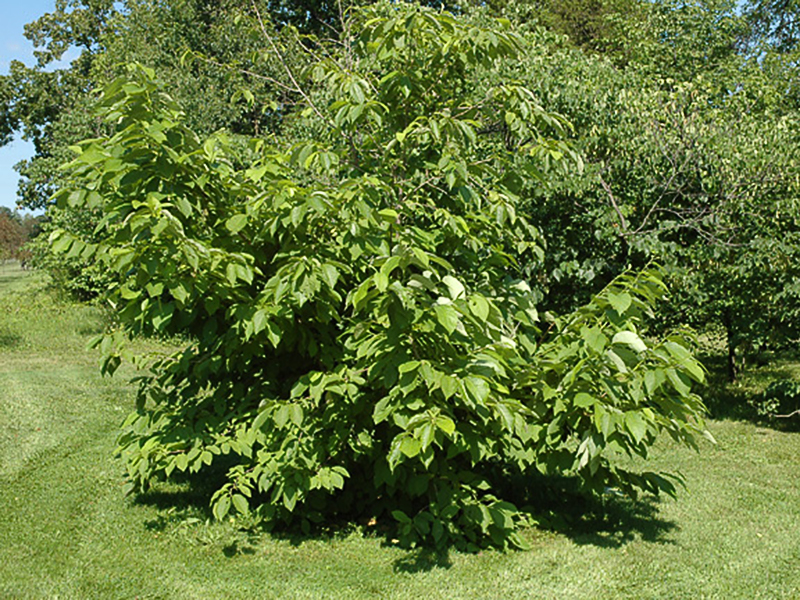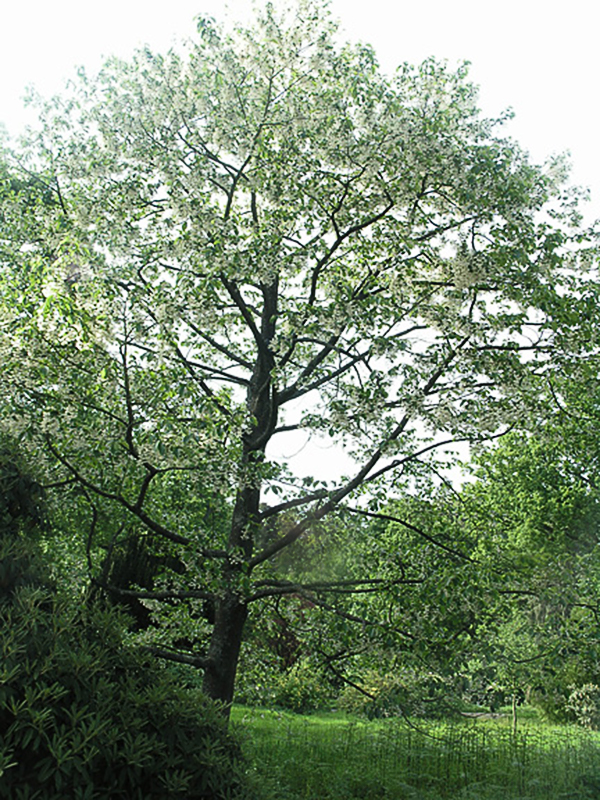
Woody > Pterostyrax > Pterostyrax hispida > Pterostyrax hispida
Pterostyrax hispida
Fragrant Epaulette Tree
Origin: Native to Japan, introduced into cultivation in 1875. The genus name comes from the Greek word 'pteron' which means wing and 'styrax' in reference to the ribbed fruit. Hispidia refers to the bristly hairs covering the fruit. Epaulette refers to the inflorescence which hangs on one side, resembling an ornamental shoulder piece found on military uniforms.
Mike's
Opinion


"
This would be a beautiful specimen tree for any garden since it has wonderfully fragrant white flowers and fruit that persist into winter. The flowers closely resemble those of the Halesia genus and are as attractive. With its low branching, open form it is said to look very artistic in the landscape. Its beauty is definitely underrated and I believe it should be grown wherever the climate is appropriate.
Michael Pascoe, NDP., ODH., CLT., MSc. (Plant Conservation)
"
| Family |
| Styracaceae |
| Genus |
| Pterostyrax |
| Species |
| hispida |
| Category |
| Woody |
| Type |
| Tree (deciduous), Shrub (deciduous) |
| Pronunciation |
| USDA Hardiness Zone |
| 4 - 8 |
| Canadian Hardiness Zone |
| 2a - 7a |
| RHS Hardiness Zone |
| H5 - H7 |
| Temperature (°C) |
| -34 - (-9) |
| Temperature (°F) |
| -30 - 15 |
| Height |
| 7 - 17 m |
| Spread |
| 6 - 12 m |
Photographs
Description and Growing Information
Flowering Period
| General Description |
| Pterostyrax hispida is a low-growing, often broad-statured tree with many pendulous blooms hanging down below branches in spring. The ribbed fruit persists into winter. |
| Landscape |
| This tree is not widely used or recognized in the landscape trade. However, since it is somewhat pollution tolerant it could be used as a street tree. Typically it is used in patio borders or as a specimen. It will provide year-round interest with fragrant, showy flowers in spring, yellow autumn cloak and winter fruit. |
| Cultivation |
| Tolerant of acidic to partially alkaline soil containing clay, loam or sandy loam. The soil must be moist and well-drained. There is a specimen in the A. M. Cuddy Gardens growing in partial shade on heavy, clay soil and it seems to thrive and flower profusely without flaw each year. Should be planted in situations where it is protected form the cold winds of winter. |
| Shape |
| Fairly rounded, sometimes demonstrating a more vase-like shape. When the specimen is young it tends to be more compact. As it ages the slender, low branches grow more openly. It can be quite broad in form, similar in character to Cornus alternifolia. |
| Growth |
| Medium |
| ID Characteristic |
| Flowers are pendulous, fringed, white and fragrant, hanging in clusters along the branches. The fruit is ribbed, hairy and persisting into winter. When the stem is bruised it produces a fowl smell. Branches contain a white pith. |
| Pests |
| No pests or diseases of note. |
| Habitat |
| Found growing in open woodland areas and on sloping terrain. |
| Bark/Stem Description |
| Young bark is smooth and light brown to grey becoming fissured, sometimes with an exfoliating affect and grey with hints of light tan peeking through the fissures. |
| Flower/Leaf Bud Description |
| Two-scaled, brown and ovoid, approximately 6.4 mm in size sitting immediately beneath the terminal bud which is 1.27 cm, yellowish brown, naked, pubescent and elongated. |
| Leaf Description |
| Alternate, simple, 7 - 19 ⨉ 3 - 10 cm, oblong-ovate with a finely dentate margin. The leaf tip is acute-acuminate and the base is cuneate. |
| Flower Description |
| White, fragrant, in pendulous panicles 12 - 25 ⨉ 5 - 7 cm. The corolla has five lobes divided almost right to its base. |
| Fruit Description |
| 1 - 2 cm, cylindrical, ribbed, dry drupes which are quite hairy, in pendulous clusters persisting into winter. |
| Texture Description |
| Leaf texture is usually medium to coarse with a partially pubescent underside. The bark is smooth when young, becoming ridged, coarse and fissured with age. The fruit are dry drupes that are highly pubescent. |
| Notable Specimens |
| The A. M. Cuddy Gardens, Strathroy, Ontario, Canada. |
| Propagation |
| By seed sown in autumn into containers and placed in a vented cold-frame to overwinter. Seed need a minimum of 5°C for three months to ensure germination. Also by semi-hardwood cuttings collected in late summer and rooted under mist and bottom heat. |


